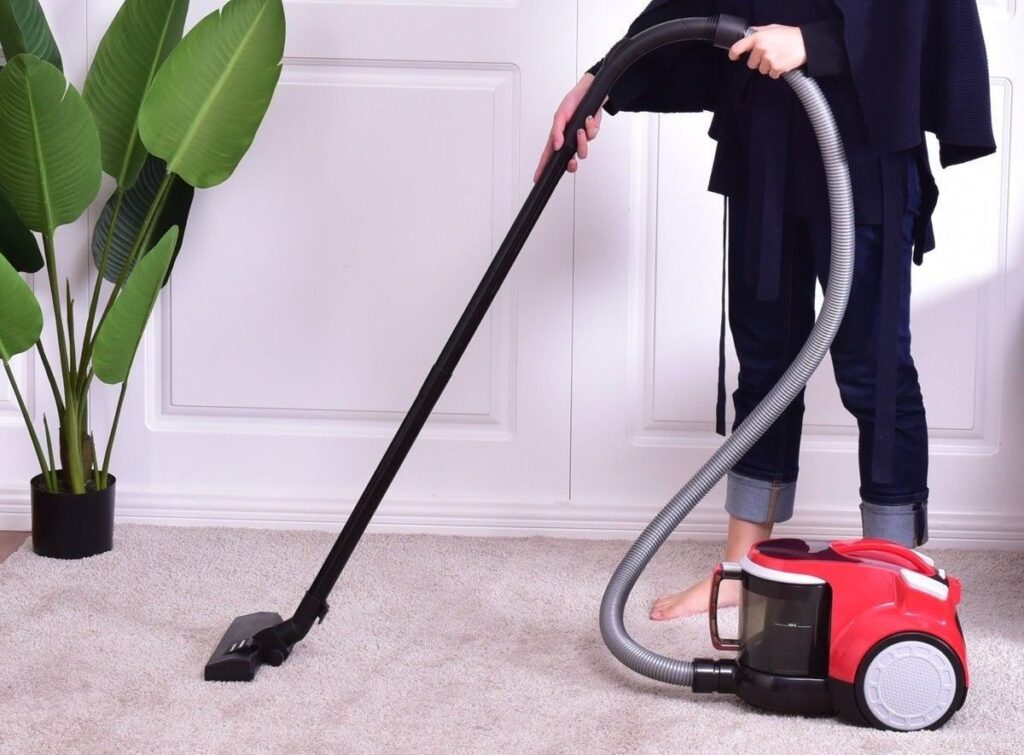Gone are the days when you had to spend thousands of dollars to buy a decent vacuum cleaner. Today, the best vacuum under 500 will vacuum and deep clean thoroughly and comes with all the cleaning apparatus you need to vacuum different surfaces, such that you’ll have no reason to replace it with a more expensive vacuum.
These vacuums are well-made and will easily pass the 5-year mark of regular use without developing technical problems, and you can use them to clean bare floors (hardwood, vinyl, tile, etc), upholstered surfaces, and rugs/carpets. For this review, we tested 5 vacuum cleaners under $500 and declared the Dyson V11 Animal to be the best vacuum overall. There are upright models to clean large spaces quickly, canister models for cleaning hard-to-reach areas, and robot vacuums for cleaning floors with the push of a button.
More features: nylon bristles, anti-static fiber filaments, LED screen, Dynamic Load Sensor system, wall-mounted dock, eco mode, flooring sensors, 4.5 hours to full charge
The Dyson V11 Animal is a desirable choice for folks who want a cordless vacuum that can transform into a handheld cleaner for spot and mobile cleaning. To boost efficiency, Dyson includes a combination tool, crevice tool, stubborn dirt brush, torque drive head, and a mini-motorized tool that is optimized to remove dirt and pet hair from carpets and upholstery. Low-profile cleaner heads make it possible to vacuum under low furniture.
A powerful V11 motor, spinning at 125,000 RPM, delivers ample suction to dislodge stubborn dirt. Because this vacuum cleaner uses battery power, you may worry that such a powerful motor may drain the battery. A valid concern there, but you’ll be relieved to know that there is a built-in Dynamic Load Sensor (DLS) system that automatically adjusts the motor speed for each floor type so that the vacuum isn’t expending excess power unnecessarily. Deploy the Auto Mode and the vacuum will change the speed and power to adapt to each floor.
Other cleaning modes are the Eco Mode, best for light, everyday vacuuming, and the Boost Mode, which is designed for intensive cleaning. The vacuum cleaner has an average runtime of 60 minutes, but this is affected by the power mode and attachments you use. The battery recharges in 4.5 hours, and, unfortunately, isn’t removable. So you’ll have to pause and recharge it if you run out of power before you finish vacuuming, which eats into your time.
More features: HEPA filter, soft brush roll, quiet and deep cleaning modes, jamming protection, full bag indicator
Soniclean Soft Carpet’s digitally-controlled motor allows you to choose how powerful the suction is each time you use the vacuum. It supports two modes: Quiet Mode for regular cleaning of carpets and hard floors and Deep Cleaning Mode, an intense cleaning setting that is best suited for heavily soiled carpets. One of the stellar features in this vacuum is the sonic cleaning technology, a patented innovation that is activated by the sonic bar, which is located at the bottom of the vacuum cleaner. Using 200 vibrations per second, it dislodges dirt that is deeply embedded in the carpet, in this way boosting cleaning performance.
This vacuum is specially designed for carpet cleaning, with a soft-bristle brush roll that is designed to protect the carpet fibers from damage. An EZ-Push adjustable-vent system helps it move smoothly on soft carpets. Open the vents to clean high pile carpets and close them to vacuum low pile carpets. Use the closed vent setting to vacuum hard floors, although you’ll quickly realize that it’s in cleaning carpets that this vacuum shines best. Also, it doesn’t come with attachments – like a crevice tool – that would help in vacuuming hard-to-reach places and upholstery.
A combination of hospital-grade HEPA filtration, H13 filter bags, and Seal-Tech system completely seals the filter onto the vacuum, ensuring that dirt particles don’t escape and recontaminate the room. There’s a full bag indicator light that will notify you when the filter bag is full.
More features: stainless steel telescopic tube, adjustable suction power, 33 ft cleaning radius, HEPA filter
The Miele C2 Hard Floor Canister Vacuum Cleaner, which, according to our tests, is the best compact canister vacuum for the price, is powered by a 1,200W Vortex motor, and this delivers adequate suction to quickly get rid of tough stains. Miele allows you to control the intensity of the suction via the Electronic Suction Control Dial, which comes with 6 suction settings: wall to wall carpet/bare floors, large area rugs, throw rugs, drapes, furniture, and quiet setting. A cleaning radius of 33″ means you make fewer passes when vacuuming, and you therefore take a shorter time to clean.
To protect your sensitive hard floors from damage, Miele uses a soft parquet floor brush. To clean rugs and low pile carpets, use the rug and floor tool. The cleaner head does not switch automatically when you move to a different floor type, so you have to make the switch manually. If you’re accustomed to using a vacuum cleaner that adjusts automatically, this may seem like a lot of work, but the vacuum cleans so good that you won’t mind the inconvenience.
To ensure that only clean air comes out of the machine while vacuuming and dirt does not escape back into the environment after vacuuming, Miele uses a combination of Super Air Clean Filter, Airclean GN Dust Bag, and Sealed System Construction.
The vacuum is fitted with a stainless steel telescopic, which you can adjust to a suitable height by simply pressing the control button. It also comes with a ton of integrated cleaning tools, including a dusting brush, a crevice tool, and an upholstery tool.
More features: two brush rolls, removable canister, LED lights, 1.5 qts dust cup volume, HEPa filter, washable foam filter
Shark APEX AZ1002 allows you to clean in three different ways: upright mode, best for intense floor and carpet cleaning; powered lift away mode, great for extended reach and under-the-furniture cleaning; and above-floor mode, which allows you to detach the canister for increased portability. This last option is ideal for cleaning stairways and above-floor surfaces. One particular challenge you’ll face when using the vacuum in the upright position (with the canister attached) is the issue of weight. You’ll be pushing 17 lbs of metal and rubber, which can quickly wear you out when you’re vacuuming a large room.
A 1,350W motor provides sustained suction, loosening embedded dirt and restoring a pristine look to heavily soiled surfaces. For enhanced efficiency, this Shark vacuum uses a dual brush roll system to deep clean carpets and leave hard floors looking polished. The self-cleaning Zero-M technology continually removes hair wrap from the brush roll, saving you the trouble of removing the hair yourself and ensuring that the performance of the brush is not hindered at any time.
By installing LED lights on the handle and floor nozzle, Shark ensures that dark areas are well lit up. This enhanced visibility means you’re unlikely to miss any spots when making a pass.
A HEPA filter safely removes pollutants and allergens, and the Advanced Anti-allergen Complete Seal system keeps them trapped inside the vacuum. The foam filter is washable and therefore reusable; it will save you money in the long run.
More features: Wi-Fi connected through the app, 3 stages of cleaning, 90 min cleaning cycle
If you’re too busy to vacuum or if you just don’t like vacuuming, the iRobot Roomba E5 is your friend. Fully automated and well able to operate on its own, the E5 Roomba is smart enough to clean your house/office and find its way back to the docking station. It does not follow a specific route and often looks like it’s moving around in confusion, but you best believe it knows exactly what it’s doing. Avoid the temptation to lift it and carry it to the room/area you want cleaned because then it loses its bearing and won’t find its way back to the docking station.
It uses sensors to navigate around the house and will not bump into walls or stationary items like furniture. However, you need to get low-lying things like cords and cables out of its way because it will pull these and cause accidents or fail to work its way around the cords.
The E5 uses a HEPA filter to trap pollutants and is a good choice if you have allergy sufferers in your home. The dirt bag is reasonably big, and the vacuuming system doesn’t miss spots or leave debris, but there is no indicator to alert you when the bag is full. So you must keep checking to know when to empty the bag.
By linking to the iRobot HOME app, you can program the Roomba to follow a preset cleaning schedule. You can also connect to Google Assistant or Alexa; setting up the Wi-Fi connection is easy.
Having looked at specific vacuum cleaners in detail, let’s now shift gears a little and talk about what to expect from a vacuum cleaner under $500 and cleaning tips to get the best out of your vacuum. We’ll also look at the features that make a great vacuum cleaner and what to look for when buying one.
Most people are not willing to splurge thousands of dollars on a vacuum cleaner, but they won’t hesitate to spend a few hundred dollars on an inexpensive vacuum. After all, they reckon, a cheaper version will do what a more expensive model does. What can you expect from an inexpensive vacuum?
Well, fewer features, for one. This is not necessarily a bad thing, especially if it has all the features needed to vacuum. It probably won’t have the technologically-advanced features found in high-end models, but it will have enough basic features and attachments to perform a decent cleaning job. For example, it may not have lots of automatic systems, but you should be able to manually make the needed adjustments.
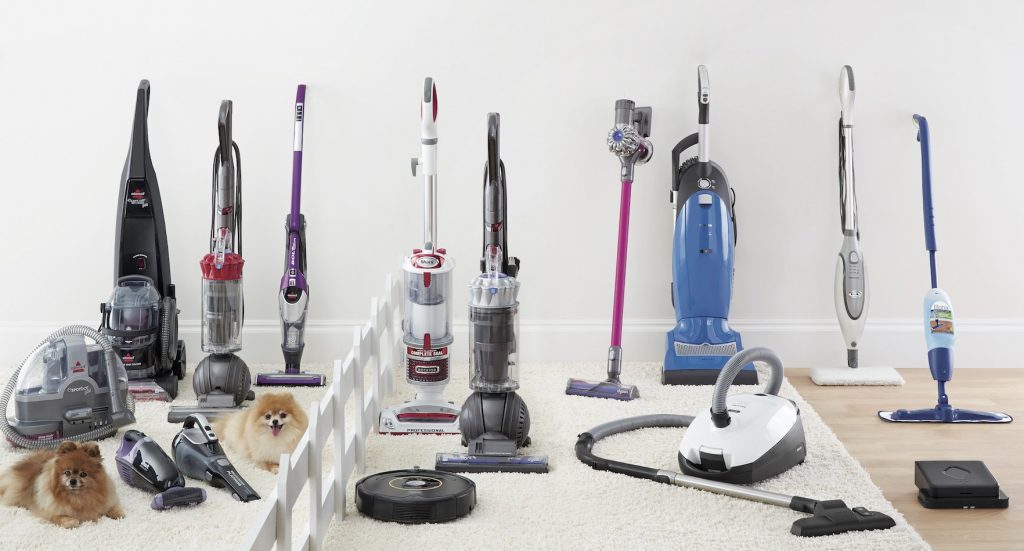
Upright vacuum cleaners – In this type, all vacuum cleaner parts are fused into one body. As such, they’re heavy, difficult to maneuver, and cannot be manipulated to vacuum underneath low furniture. They’re, however, excellent at cleaning carpets and will sufficiently deep clean high-traffic areas. They also have a wide cleaning head, which makes them perfect for vacuuming large rooms. They are easy to store.
Canister vacuum cleaners – These are designed with the power head separate from the canister. Most of them operate quietly, the only drawback being that you have to pull the canister as you move around the room. They’re best for cleaning hard floors, underneath furniture, and stairs. They take up more storage space than upright vacuums.
Stick vacuum cleaners – This type comes with a tall body, power head, and handle, and is mostly battery-powered. They are lightweight, highly portable, and best suited for light vacuuming. They have a smaller dirt bag than what you’d find in bigger vacuum cleaners.
Handheld vacuum cleaners – Like stick vacuums, they are lightweight and highly portable. The difference is that they’re much smaller than stick vacuums, and you can operate them on one hand. They’re best suited for light vacuuming of upholstery, short-pile carpets, and bare floors.
Robotic vacuums – These are programmed to operate independently without any human input. They know how to maneuver their way around your house and get back to the charging station to recharge when they run low on power. They’re best for use in uncluttered spaces with bare floors.
Let’s now look at the various features to consider when choosing a vacuum cleaner.
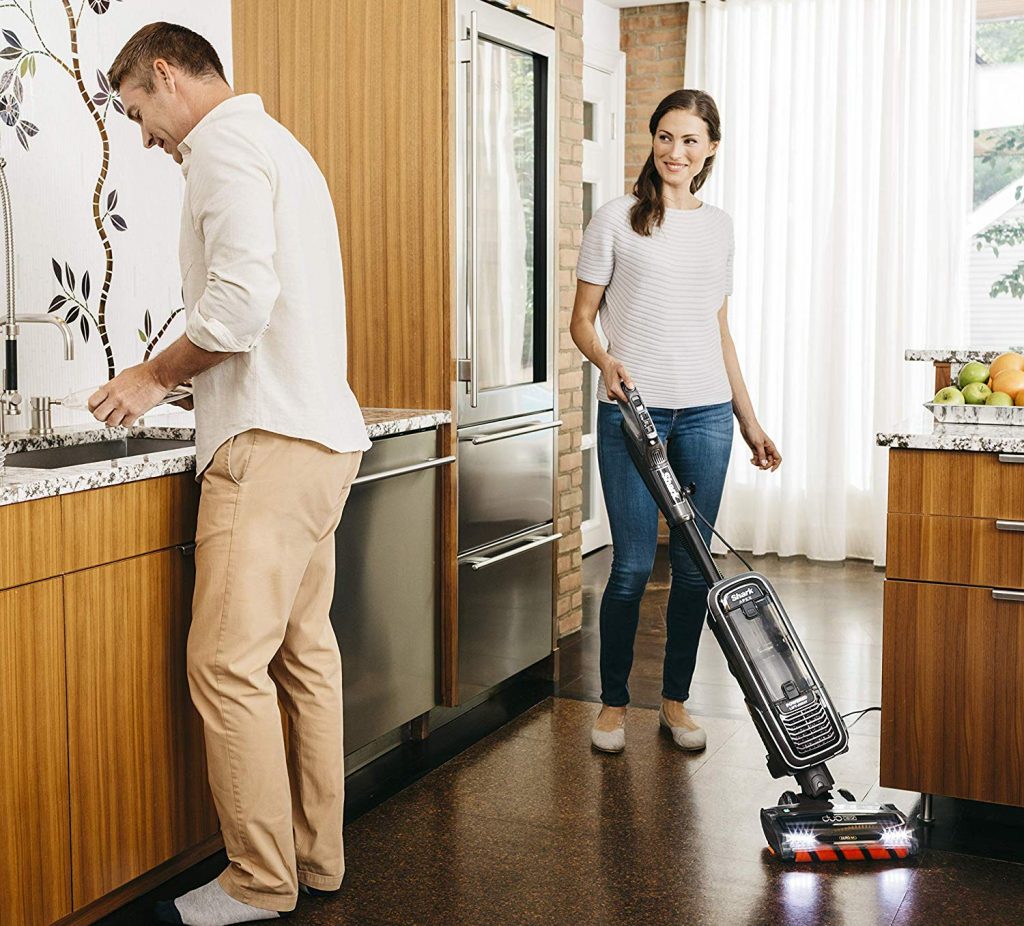 Power
PowerThe most efficient vacuum cleaners have a precise balance of motor power and suction. To find out how powerful the vacuum is, look at the air watt rating, which indicates how well the power produced is converted to suction based on the amount of air moving through the vacuum. The vacuum needs strong suction to pick up dirt effectively. The type of vacuum will also dictate how powerful the motor needs to be. For instance, canister vacuums like the Miele C2 need more power to help push the collected dirt down the hose.
The best vacuum cleaner is versatile enough to use on different surfaces. You should be able to use it to vacuum both hard floors and carpets.
Some vacuum cleaners are designed primarily for hard floors, but they have attachments for cleaning carpets. Likewise, some are designed for cleaning carpets but, with the help of a hard floor tool, can be used to vacuum bare floors. Confirm that you can use the vacuum cleaner for your specific type of floor, whether that is hardwood flooring, laminate, vinyl, or tile.
If you’ll be cleaning above-floor surfaces, choose a vacuum cleaner with the requisite tools. Likewise, consider the tools’ ease of use. For instance, is the hose long enough to reach the top of your floor-to-ceiling drapes?
Each option has pros and cons.
One of the biggest advantages bagless vacuum cleaners have over bagged vacuums is that they suffer little or no loss of suction. Another plus is that you won’t need to buy dirt bags. However, you’ll have to clean the filters once a month and replace them after a specific period, as recommended by the manufacturer. The major disadvantage with bagless vacuums is that it’s easy for dirt to escape back into the room while you’re emptying the canister.
With bagged vacuum cleaners, dirt is completely sealed inside the bag, as in the The Miele C2 Hard Floor Canister Vacuum Cleaner and Soniclean Soft Carpet, and this makes them the best option for allergy sufferers. They also have a larger capacity than bagless vacuums, but for greater convenience, choose a vacuum cleaner with a big dirt bag so that it doesn’t fill up quickly.
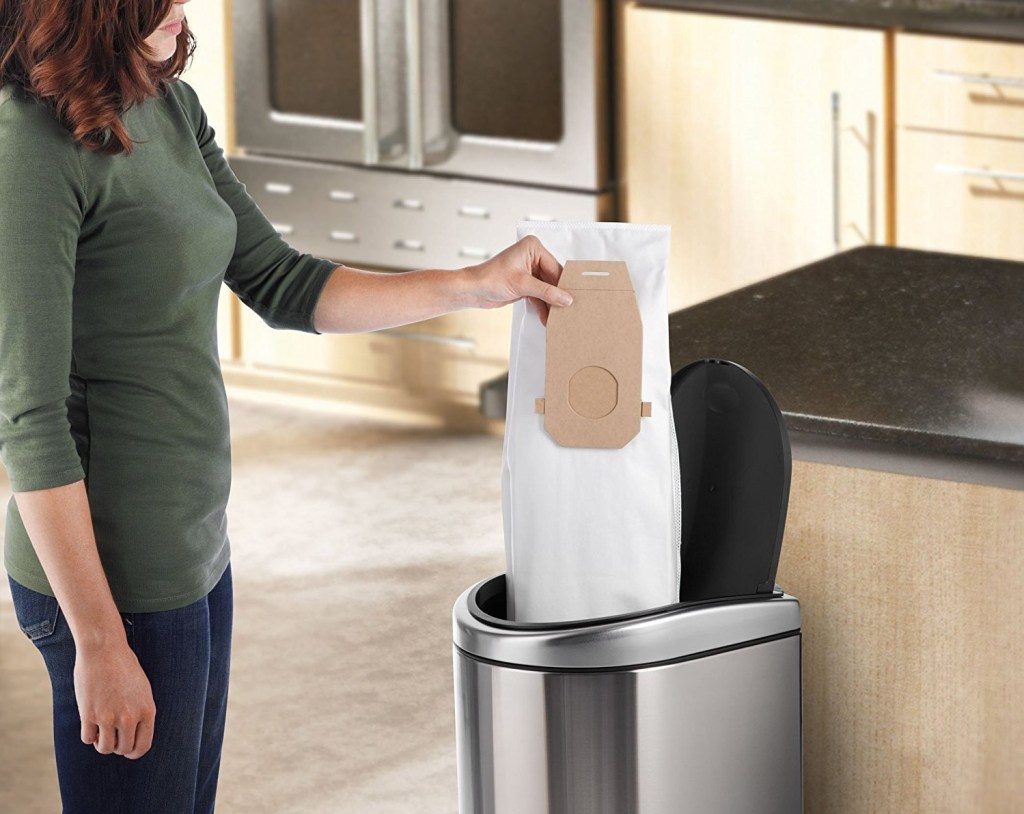 Noise levels
Noise levelsThe motor size of your vacuum cleaner, in part, may determine how noisy the vacuum is. Because they usually have bigger motors than other types of vacuum cleaners, upright vacuum cleaners tend to be the loudest in the group. But there’s more: high-powered motors are also noisier than low-powered ones, regardless of size. A vacuum with a small, high-powered motor may be louder than one with a bigger, low-powered motor. Bagless vacuums also tend to be noisier than bagged vacuum cleaners because of the motor’s proximity to the casing.
If you find the loud noise from machines disturbing, look for a vacuum with a noise level of 72 dB or less, which is considered quiet when it comes to vacuum cleaners. With such a vacuum cleaner, babies can sleep uninterrupted and you and others can carry on with conversation while the vacuum is running.
Consider add-ons like dusting brushes, an upholstery tool, crevice tool, and hard floor tool since these make the vacuum more versatile. Lots of vacuums come with the complete range of cleaning accessories. Good examples are the Dyson V11 Animal and Miele C2. A vacuum that doesn’t have added tools, such as the Soniclean Soft Carpet, only allows you to do the bare minimum, in this case clean carpets.
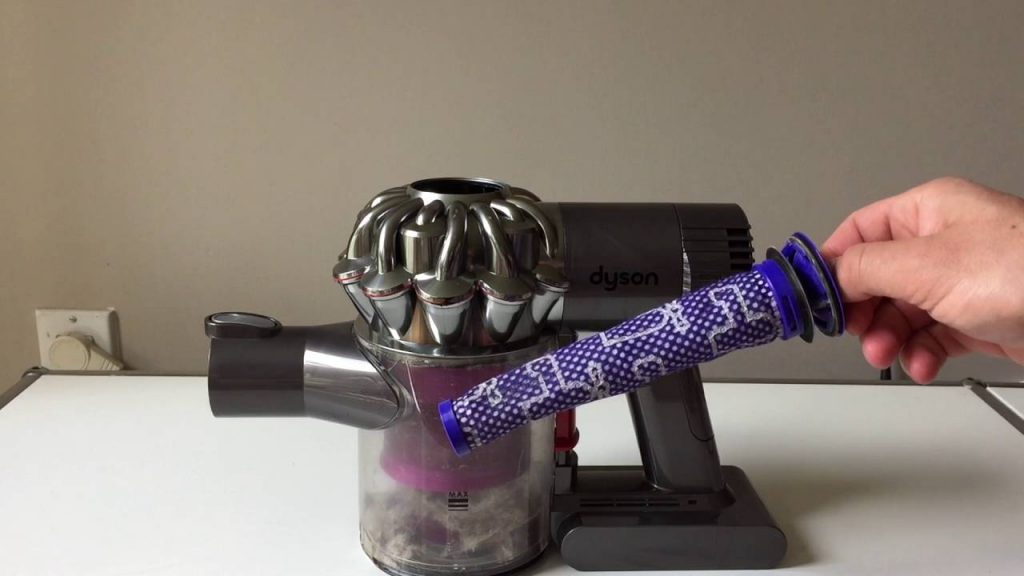
A good vacuum cleaner is easy to use. Some user-friendly attributes are:
Choose a vacuum cleaner that has safety features, especially if you have kids. You want a vacuum with a retractable cord to minimize the likelihood of tripping on the cord.
Consider buying a vacuum with a wheel lock and a brush roll lock to prevent accidents.
A safety lock that shuts off the power supply will ensure your kids are safe even if they plug in the vacuum.
The design of your vacuum cleaner can make using the vacuum pleasant or unbearable. Beginning with the size, choose a vacuum in a size that’s right for your cleaning needs. The same goes for the weight. If you expect to be carrying the vacuum upstairs and downstairs, it needs to be light enough.
If you’ll be cleaning a wide area, choose a vacuum with a big cleaning head and a wide cleaning allowance. The design of the brush rolls, too, can impact how useful the vacuum is.
 Warranty
WarrantyThe longer the warranty period, the longer you’ll be covered in case the vacuum malfunctions or a component gets damaged. Some vacuum cleaners with a short warranty, like the iRobot Roomba E5 and Miele C2, are covered for only 1 year. But a lot of other brands give a longer warranty period. For example, Soniclean Soft Carpet and Shark APEX AZ1002 each come with a 5-year warranty, while the Dyson V11 Animal has a 2-year warranty.
Establish a regular vacuuming schedule so that you reduce the number of times you have to deep lean or vacuum intensely.
Choose the right setting for the floor you’re vacuuming and adjust this accordingly when you move to a different floor.
Vacuum your carpets/rugs from the center going outward to keep the rug from fraying.
Change or replace your filters and dirt bag as advised by the manufacturer.
Pick up small objects from the floor before you begin vacuuming as these could damage your vacuum cleaner.
Our top choice is the Dyson V11 Animal. We like how it converts into a hand-held vacuum for those hard-to-reach places and above-floor vacuuming. We also like the nylon bristles that are gentle yet do a thorough cleaning job on all surfaces. Another winning point for us is the fact that it uses a battery and is therefore not limited by the absence of power outlets.
Our second choice is the Soniclean Soft Carpet, which stands out for its high-tech sonic cleaning technology. Other remarkable features include the adjustable-vent system, HEPA and Seal-Tech systems, full bag indicator light, and the long cord.
Our third best vacuum under 500 is the Shark APEX AZ1002. Other than its attractive price point, we like the dual brush roll system, the self-cleaning brush roll technology, the Complete Seal system that locks away the collected dirt, and the LED lights on the floor nozzle and handle. We also like how you can use it in 3 different ways.



